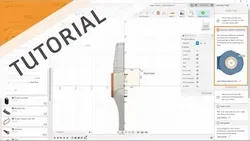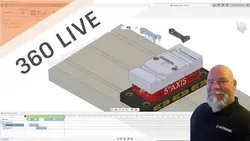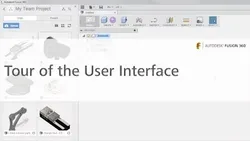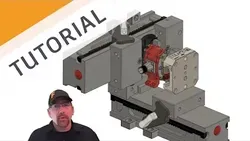
Solidworks Transition Guide

This guide provides an overview of the SolidWorks user interface, from concept to fabrication. It covers data management, team collaboration, design automation, and more. It is designed to help users transition to SolidWorks quickly and easily.▼
Course Feature
![]() Cost:
Cost:
Free
![]() Provider:
Provider:
Youtube
![]() Certificate:
Certificate:
Paid Certification
![]() Language:
Language:
English
![]() Start Date:
Start Date:
On-Demand
Course Overview
❗The content presented here is sourced directly from Youtube platform. For comprehensive course details, including enrollment information, simply click on the 'Go to class' link on our website.
Updated in [February 21st, 2023]
What does this course tell?
(Please note that the following overview content is from the original platform)
SolidWorks Transition Guide 1 of 10 - Tour the User Interface.
SolidWorks Transition Guide 2 of 10 - Integrated Concept to Fabrication.
SolidWorks Transition Guide 3 of 10 - Data Management.
SolidWorks Transition Guide 4 of 10 - Team Collaboration.
SolidWorks Transition Guide 5 of 10 - Direct Editing.
SolidWorks Transition Guide 6 of 10 - 2D Sketching, Constraints, and Parametric Modelling.
SolidWorks Transition Guide 7 of 10 - 3D Modeling.
SolidWorks Transition Guide 8 of 10 - Assembly Modeling.
SolidWorks Transition Guide 9 of 10 - Joints and Motion Studies.
SolidWorks Transition Guide 10 of 10 Surface Modeling.
We consider the value of this course from multiple aspects, and finally summarize it for you from three aspects: personal skills, career development, and further study:
(Kindly be aware that our content is optimized by AI tools while also undergoing moderation carefully from our editorial staff.)
1. You can learn the basics of Solidworks user interface and its features. This includes understanding the user interface, navigating the menus, and learning the tools and commands.
2. You can learn how to use Solidworks to create integrated concepts from design to fabrication. This includes understanding the design process, creating 3D models, and using the software to create prototypes.
3. You can learn how to manage data in Solidworks. This includes understanding the data structure, organizing data, and using the software to store and share data.
4. You can learn how to collaborate with others using Solidworks. This includes understanding the collaboration tools, working with teams, and using the software to communicate and collaborate.
5. You can learn how to directly edit models in Solidworks. This includes understanding the direct editing tools, using the software to make changes, and using the software to create custom models.
[Applications]
After completing the Solidworks Transition Guide course, users can apply the knowledge they have gained to create 3D models, assemblies, and motion studies. They can also use the integrated concept to fabrication tools to create complex designs. Additionally, users can use the data management tools to store and share their designs with team members. Direct editing and 2D sketching, constraints, and parametric modelling can be used to create precise designs. Finally, surface modelling can be used to create smooth and accurate surfaces.
[Career Paths]
1. CAD Designer: CAD Designers use SolidWorks to create 3D models of products and components. They are responsible for creating detailed drawings and specifications for manufacturing and engineering processes. As technology advances, CAD Designers must stay up to date with the latest software and techniques to ensure their designs are accurate and efficient.
2. Mechanical Engineer: Mechanical Engineers use SolidWorks to design and analyze mechanical systems, components, and products. They must be knowledgeable in the principles of physics, mathematics, and engineering to create efficient and cost-effective designs. With the increasing demand for automation and robotics, Mechanical Engineers must stay up to date with the latest technologies and trends to remain competitive.
3. Manufacturing Engineer: Manufacturing Engineers use SolidWorks to design and analyze manufacturing processes and systems. They must be knowledgeable in the principles of engineering, mathematics, and physics to create efficient and cost-effective designs. With the increasing demand for automation and robotics, Manufacturing Engineers must stay up to date with the latest technologies and trends to remain competitive.
4. Product Designer: Product Designers use SolidWorks to create 3D models of products and components. They are responsible for creating detailed drawings and specifications for manufacturing and engineering processes. As technology advances, Product Designers must stay up to date with the latest software and techniques to ensure their designs are accurate and efficient.
Course Provider






